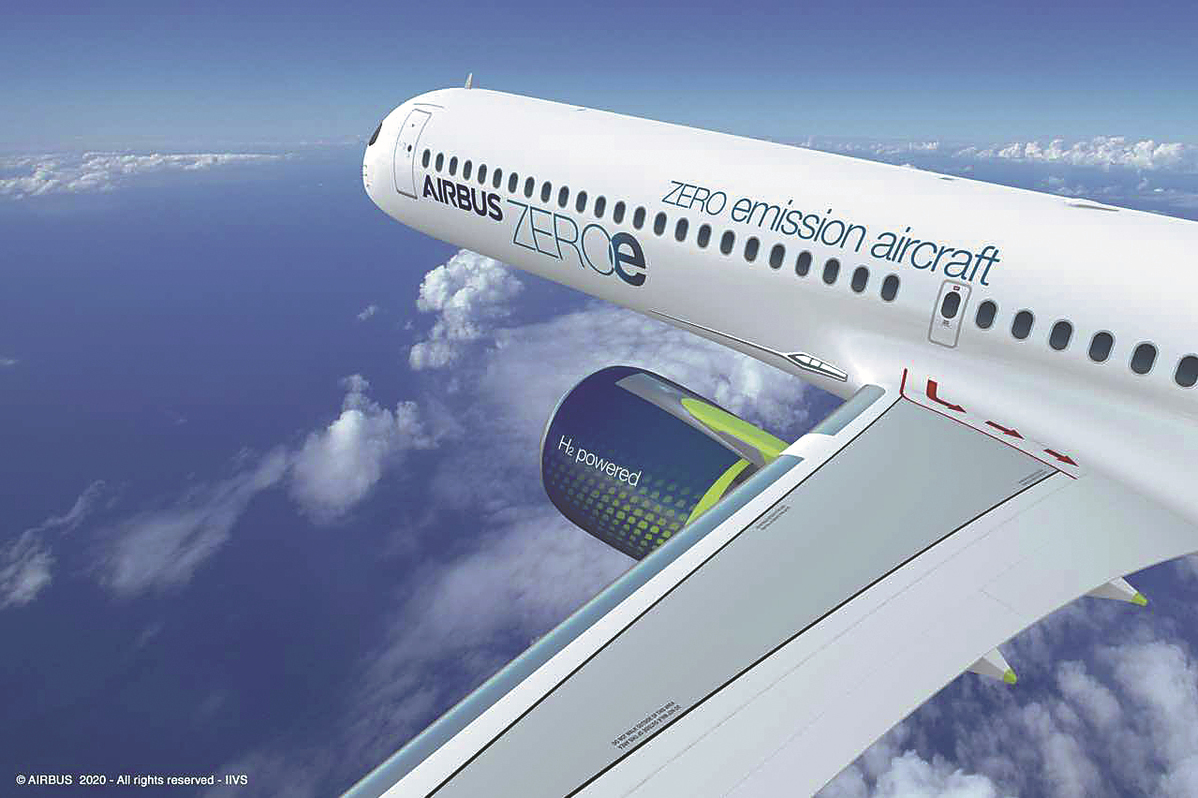Planned Airbus research center to open next year for green, sustainable goals


European aircraft manufacturer Airbus will further industrialize its technology and innovation projects-by launching a new research center in the Suzhou Industrial Park in Suzhou, Jiangsu province-and focus on research of its futuristic hydrogen-powered aircraft.
Airbus said the Yangtze River Delta region has an advanced aviation industrial chain, and the research center is expected to be put into operation by early next year. It will start the hiring process this year, and allow enough time for the recruitment of foreign employees.
Airbus said the new research center will be a useful complement to its existing business and will help decarbonize its aircraft and explore hydrogen and related industries. It has invested more than 2 billion euros ($2.12 billion) annually in research related to reducing carbon emissions, and how to cut such emissions has become a top priority for the company's research efforts.
In the past few decades, Airbus has developed various technologies for its future aircraft. It aims to bring the first zero-emission aircraft powered by hydrogen by 2035. Local companies could be included in the global aerospace industry and become reliable partners for Airbus, the aircraft manufacturer said.
"Suzhou is located in the core area of the Yangtze River Delta region, which is one of the most dynamic regions for China's economic growth," said George Xu, executive vice-president of Airbus and chief executive officer of Airbus China.
"The city's complete industrial chain layout is suitable for the development of hydrogen energy and new energy storage facilities, and this coincides with Airbus' goal to actively promote sustainable development of the aviation sector," Xu said.
"Airbus is constantly strengthening its layout in China. China has many cutting-edge technologies, and our commitment to cooperate with more Chinese industrial players and Chinese airlines remains unchanged," he said.
Suzhou Industrial Park has been the first flagship cooperation project between the governments of China and Singapore. The park has successively introduced investments from nearly 5,000 foreign enterprises, and actual utilized foreign capital stands at $37 billion, according to the local government.
Last year, total imports and exports to and from Suzhou reached 2.53 trillion yuan ($377.6 billion), up 13.5 percent year-on-year, hitting a record high. The two-way trade volume accounted for about half of Jiangsu's total, and 6.4 percent of the nation's total, according to the local government.
"Suzhou is building a digital economy in an all-around way and promoting the deep integration of digital economy and real economy. We will further promote high-level opening-up and welcome more European companies like Airbus to invest in Suzhou," said Cao Lubao, Party secretary of Suzhou.
Michel Tran Van, chief operating officer of Airbus China, said, "Our industrial footprint in China covers the entire supply chain from raw material procurement, component production, and large component assembly to final assembly, involving all Airbus aircraft family members, including A220, A320, A330 and A350."
He said, "We also have the Airbus Beijing Engineering Center and Airbus China Innovation Center in Shenzhen, Guangdong province, and dedicated scouting personnel for exploring cutting-edge new technologies and maintaining close ties with Chinese startups."
The global aviation industry is undergoing a profound transformation with the goal of continuously reducing carbon emissions. The International Air Transport Association said that since 1990, carbon emissions per passenger have declined by more than 50 percent.
Yu Zhanfu, partner and vice-president of the China unit at consultancy Roland Berger, said air transportation is irreplaceable in contributing to domestic and international communications. The reduction of carbon emissions in the civil aviation industry has been a continuing process, and positive results have been gradually seen.
"It will be a highly challenging task to continuously explore diversified methods for energy-saving and carbon emissions reductions, as the number of aircraft constantly grows," Yu said.




































